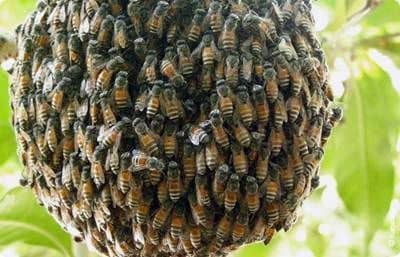
Rooting mostly occurs spontaneously and is not always convenient for the beekeeper, because it is associated with the loss of productivity of the apiary. Thanks to many years of practice I was convinced that it is better to create bees artificially, that is to say. to eliminate the family’s swarming state. To this end, to the beehive, in which the family is placed, we bring an empty beehive with frames of land and two or three frames of an artificial honeycomb. In the hive, where the family is located, search for the uterus and together with the frame on which it is located, we transfer it to the newly formed nest. After that, the old hive is put aside for 10-12 meters, and in its place we put a newly formed family.
The entire flying bee returns to the new hive and, finding its uterus, energetically starts to work, as, without having brood, the bees switch to honey.
In the old nest young uterus and bees will leave only the best.
Having reserves of brood and a break in the worm, as the young womb does not immediately start egg-laying, the family will energetically switch to collecting honey.
The method is based on the fact that, the family is a whole biological unit and when the flying bees are separated from the domestic bees, the swarming will not take place, i. e. the biological integrity of a single organism rises.
Нектар и пыльца для пчел. Рот у пчел.
The bee family and its composition